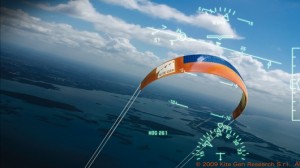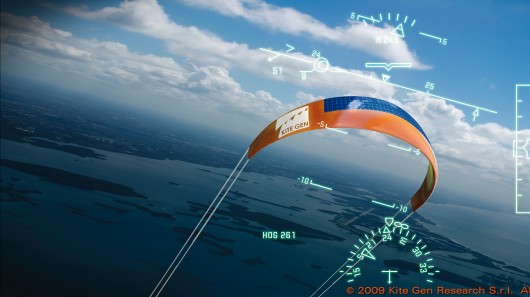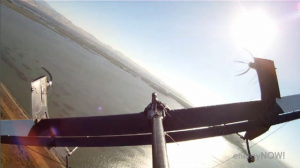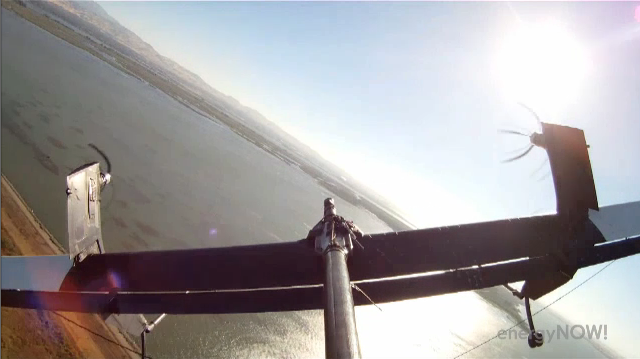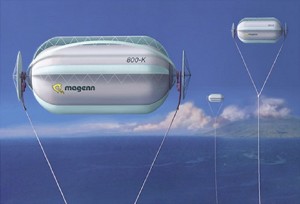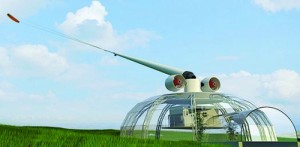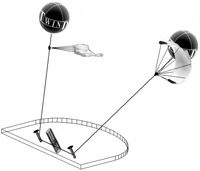It’s an expert estimation that the total energy stored in wind is 100 times higher than actually needed by humans on this earth. The catch is that we have to learn and devise ways to trap this wind power blowing across the planet earth. Experts tell us one more thing that most of the wind energy is available at high altitude and we can’t manufacture turbines of that height. So we have to think of new ways to trap that wind power blowing at a significant height. Some experts estimate that the total energy contained in wind is 100 times the amount needed by everyone on the planet. However, most of this energy is at high altitudes, far beyond the reach of any wind turbine.
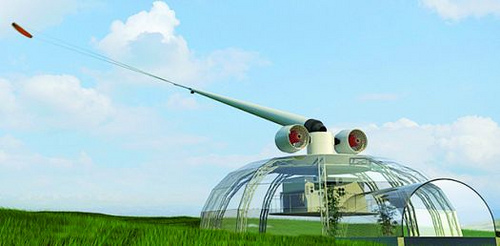
Now researchers want to create something like a kite that can float at a higher altitude to trap the wind energy.
Kite Wind Generator
The Kite Wind Generator simply known as KiteGen is an Italian company. They are installing kites that sprout from funnel like structures. They are mounted on giant poles. When wind blows these kites come out of funnels. For short, use kites that spring from funnels on the end of giant poles when the wind blows. For each kite, winches release a pair of high-resistance cables to control direction and angle. These kites are light and ultra-resistant. These kites are similar to those used for kite surfing – light and ultra-resistant, capable of flying up to a height of 2,000 meters.
KiteGen people have thought of new ways to exploit the wind power existing at an altitude. They have discarded the usual heavy and static plants like current wind turbines, but opted for light, dynamic and intelligent ones. They have installed all the light devices in the air and heavy ones on the ground for generating power. The basics of the wind turbines and KiteGen are same. But they have moved the heaviest parts to the ground. They claim that the resulting structure, base foundation included, is much lighter and cheaper. They have also provided flexibility regarding the height of kites. If the wind is strong at certain height, the height of the kite too can be adjusted accordingly. If today wind if blowing nicely at 1000m, say, kites can be adjusted at the same height. If tomorrow the strong wind is blowing at certain other height, wind kites can be flown at that height to gain maximum advantage of the wind power.
The swirling kites prompt KiteGen’s core in motion, and the rotation activates large alternators producing a current. They also have a control system on autopilot. This control system manipulates the flight pattern so that maximum power can be generated be it night or day. The KiteGen people are concerned with the environment too. They don’t want the lives of birds to be affected by their flying kites. So they have installed the advanced radar system that can redirect kites within seconds in case they detect flying of birds.
The cost of the technology is US$750,000 and it won’t takes acres and acres of space like a wind farm. You can install the whole machinery within a diameter of just 100 meters. KiteGen claim that they can produce half a GW of energy, and produce it at a cost of US$2.5 per GW. Its creators, Sequoia Automation, say a 2,000 meter-version would generate 5GW of power.
Video

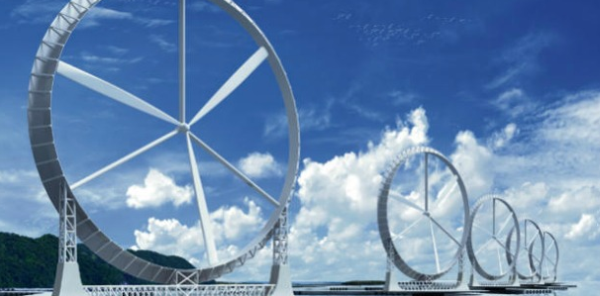
 Follow
Follow